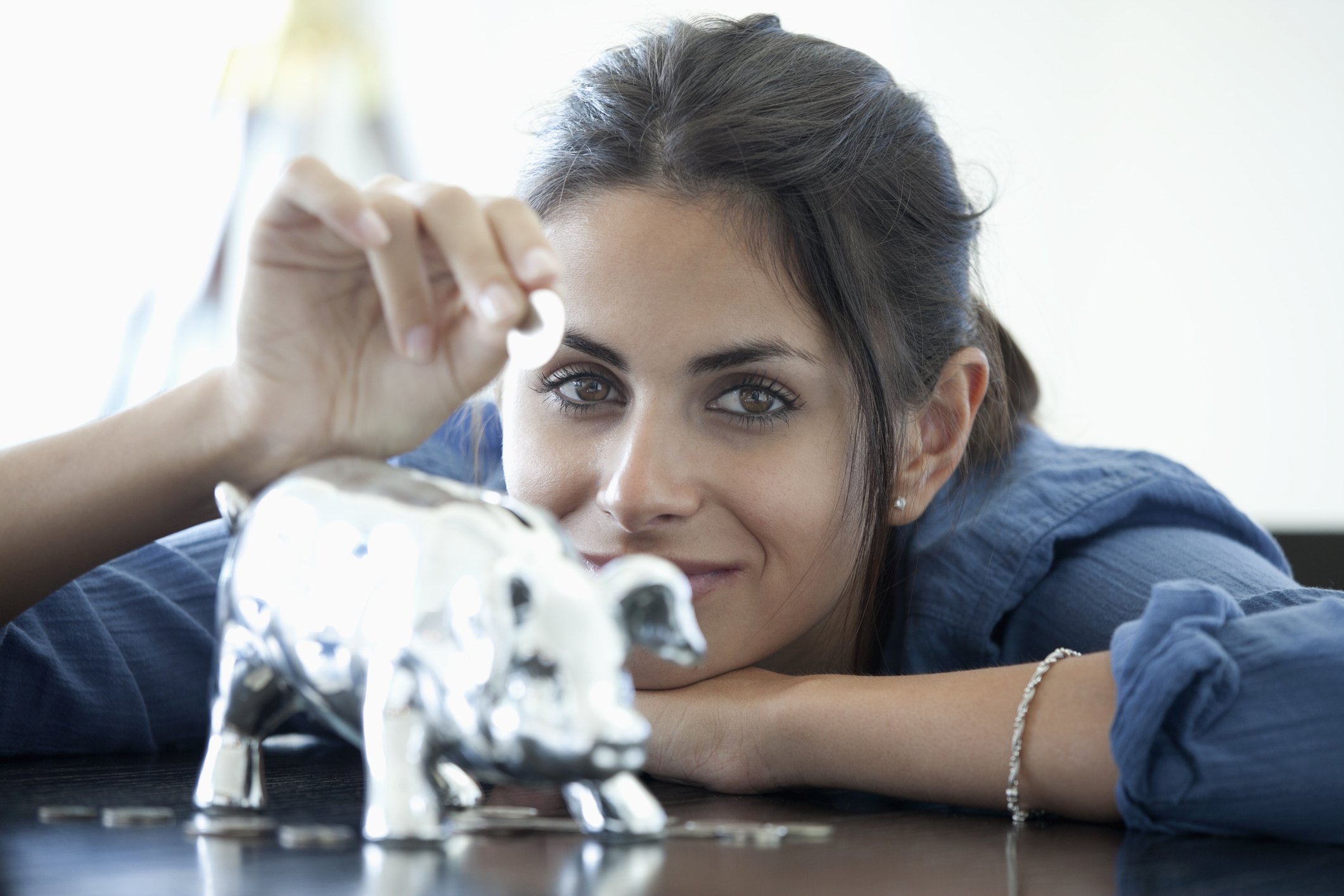7 Best ETFs for 2016
My selections are designed to capitalize on opportunities I see in the coming year.

Exchange-traded funds keep gaining new fans. And why shouldn’t they? The average actively managed fund trails its benchmark index by roughly its expense ratio. Low-cost ETFs are the individual investor’s new best friend. Better still, ETF providers keep cutting costs to stay competitive.
Of course, you’ll do best with ETFs that are positioned in the market’s sweet spots. ETFs, for the most part, run on autopilot. So the responsibility for good and bad choices rests squarely with you.
I don’t claim to be a clairvoyant, but I do like to buy what’s cheap. The following are my seven best ETF picks for 2016. My selections are designed to capitalize on opportunities I see in the coming year; please don’t confuse this list with my recommended buy-and-hold ETF portfolio.
From just $107.88 $24.99 for Kiplinger Personal Finance
Become a smarter, better informed investor. Subscribe from just $107.88 $24.99, plus get up to 4 Special Issues

Sign up for Kiplinger’s Free Newsletters
Profit and prosper with the best of expert advice on investing, taxes, retirement, personal finance and more - straight to your e-mail.
Profit and prosper with the best of expert advice - straight to your e-mail.
Let’s start with the main course. Schwab US Broad Market ETF (symbol SCHB) gives you the entire U.S. stock market for a mere 0.03% in annual expenses. “Most ETFs have been tracking their benchmarks with laser-like precision,” says Ben Johnson, director of ETF research at Morningstar. “That means costs matter more than anything else.” The Schwab ETF tracks the Dow Jones U.S. Broad Stock Market index, which is a market-capitalization-weighted index of the 2,500 largest U.S. companies.
Foreign economies, in general, face much stiffer headwinds than the U.S., but foreign stocks are also cheaper than U.S. stocks based on price-earnings ratios and other measures of value. Vanguard FTSE Developed Markets ETF (VEA) offers a market-cap-weighted index of stocks in 24 developed foreign countries, including some exposure to mid-cap and small-cap stocks. It charges 0.09% annually. That’s 0.01 percentage point more than Schwab International Equity ETF (SCHF) charges, but the Schwab entry excludes most small-cap stocks.
Emerging markets have brought investors nothing but heartache since the U.S. debt-ceiling crisis in 2011. I’m still a believer in the power of companies from fast-growing emerging nations to deliver superior results, but I don’t want to go full-bore on this risky asset class, so I’m recommending iShares MSCI Emerging Markets Minimum Volatility (EEMV) to take a bit of the risk off the table. It has been 18% less volatile than the MSCI Emerging Markets index over the past three years. During that period, Minimum Volatility lost an annualized 3.9%, compared with an annualized loss of 6.6% for the MSCI index. The ETF, Johnson says, “steers away from the big Chinese state-owned enterprises, which might not have shareholder value at the top of their to-do list.” The fund also limits its exposure to mining and energy shares. Emerging markets, says Johnson, are “broken down, battered and bruised.” They might fall even further, but, in my view, they are far too cheap to ignore: The MSCI index trades at just 11 times analysts’ estimated 2016 earnings. The ETF charges 0.25% annually. (All returns and price-earnings ratios are through December 16.)
Back in the U.S., Vanguard Growth ETF (VUG) charges just 0.09% to invest in large-company growth stocks. The ETF’s stocks, on average, trade at nosebleed level—22.5 times analysts’ estimated earnings for 2016, compared with a P/E of 18.5 for Standard & Poor’s 500-stock index. (The average P/E for the S&P 500 over the long term is 15.5.) But growth stocks usually command higher P/Es than value stocks. Although growth stocks have topped value stocks in five of the past six years, the Leuthold Group, an investment research firm, says that value stocks are still overvalued compared with growth stocks—by a significant margin. By definition, companies that fall into the growth camp are expected to grow more rapidly than value stocks. That’s why their stocks are awarded premium P/Es—and why they are especially vulnerable to earnings disappointments and other setbacks. So don’t overdo this pick.
Don’t overdo Vanguard S&P Small-Cap 600 Index ETF (VIOO), either. The Russell 2000 index, which tracks stocks of small companies, has trailed the S&P 500 by an average of 3.5 percentage points per year over the past five years. But as a result, Leuthold reports, small caps are no longer overpriced relative to large caps, based on their historical valuations. And the Vanguard small-cap ETF boasts a hidden advantage over its rivals: It tracks the eponymous S&P small-cap index, which has beaten the better known Russell 2000 by an average of 2.3 percentage points per year over the past five years. Why? Because S&P evaluates stocks for inclusion in all of its indexes—and excludes the shakiest companies. That makes little difference with large caps and mid caps, but in small-cap land, where many risky companies reside, the S&P process seems to help. The ETF charges 0.15% annually.
Bonds are unlikely to offer rich returns in 2016. But you need to own bonds—not so much for income, but to dampen your portfolio’s volatility. Vanguard Short-Term Corporate Bond Index (VCSH) yields 2.2% and, as its name suggests, invests in short-term investment-grade debt. Based on the fund’s average duration, a measure of interest-rate sensitivity, its price should decline by less than 3% if rates rise by one percentage point. Average credit quality is single-A. This ETF won’t make you rich, but it won’t hurt you the way long-term investment-grade bond funds or junk bond funds could in the coming year.
Fidelity Total Bond (FBND) is an actively managed near-clone of one of my favorite bond mutual funds, Fidelity Total Bond (FTBFX), a member of the Kiplinger 25. Expenses are 0.45% annually. Average credit quality is triple-B, and about 12% of assets are junk-rated. The ETF yields 3.4% and should lose about 5% in price if rates rise by one percentage point. You get a mix of corporates, Treasuries and mortgage securities (mostly government-guaranteed). If rates rise slowly next year, or don’t rise at all, this ETF should do better than the Vanguard short-term offering.
As for allocation, for investors who are 10 or more years from retirement, put 15% in each of the bond funds, 30% in the Schwab ETF, 15% each in the Vanguard Growth ETF and the Vanguard developed-overseas-market ETF, and 5% each in the small-cap ETF and the emerging-markets ETF. If you’re closer to retirement or already retired, put 20% of your assets in each of the bond funds and subtract 5 percentage points from your allocation to the growth ETF and the developed-market ETF.
Steve Goldberg is an investment adviser in the Washington, D.C., area.
See my Other Picks: The 6 Best Stock Funds for 2016 and: The 7 Best Bond Funds for 2016
Profit and prosper with the best of Kiplinger's advice on investing, taxes, retirement, personal finance and much more. Delivered daily. Enter your email in the box and click Sign Me Up.

-
 The Kiplinger Letter's 10 Forecasts for 2026
The Kiplinger Letter's 10 Forecasts for 2026The Kiplinger Letter Here are some of the biggest events and trends in economics, politics and tech that will shape the new year.
-
 We're retired and mortgage-free, but he wants to downsize.
We're retired and mortgage-free, but he wants to downsize.We've paid off our mortgage, have $970K in savings and $5K each month from Social Security. Kiplinger asked wealth planners for advice.
-
 How to Avoid Feeling Too Guilty to Spend in Retirement
How to Avoid Feeling Too Guilty to Spend in RetirementAre you living below your means in retirement because you fear not having enough to leave to your kids? Here's how to get over that.
-
 How Inflation, Deflation and Other 'Flations' Impact Your Stock Portfolio
How Inflation, Deflation and Other 'Flations' Impact Your Stock PortfolioThere are five different types of "flations" that not only impact the economy, but also your investment returns. Here's how to adjust your portfolio for each one.
-
 Why I Still Won't Buy Gold: Glassman
Why I Still Won't Buy Gold: GlassmanOne reason I won't buy gold is because while stocks rise briskly over time – not every month or year, but certainly every decade – gold does not.
-
 Should You Use a 25x4 Portfolio Allocation?
Should You Use a 25x4 Portfolio Allocation?The 25x4 portfolio is supposed to be the new 60/40. Should you bite?
-
 Retirement Income Funds to Keep Cash Flowing In Your Golden Years
Retirement Income Funds to Keep Cash Flowing In Your Golden YearsRetirement income funds are designed to generate a reliable cash payout for retirees. Here are a few we like.
-
 10 2024 Stock Picks From An Investing Expert
10 2024 Stock Picks From An Investing ExpertThese 2024 stock picks have the potential to beat the market over the next 12 months.
-
 Special Dividends Are On The Rise — Here's What to Know About Them
Special Dividends Are On The Rise — Here's What to Know About ThemMore companies are paying out special dividends this year. Here's what that means.
-
 How to Invest in AI
How to Invest in AIInvestors wanting to know how to invest in AI should consider these companies that stand to benefit from the boom.
-
 Why I Still Like Emerging Markets
Why I Still Like Emerging MarketsPeriods of global instability create intriguing possibilities in emerging markets. Here are a few.